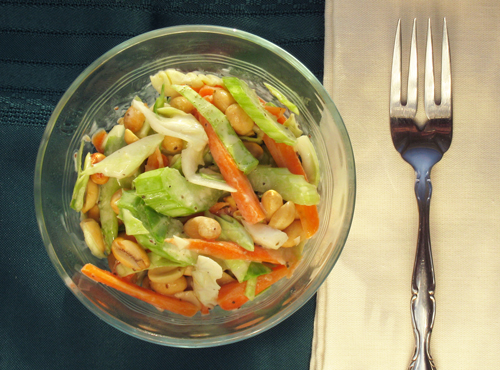
Pringles and the Industrialization of Food
My first job out of college was with Procter & Gamble, a soap company that also sold factory foods like Crisco shortening and salad oil. Desperate for new products, P&G had resorted to growth by acquisition (Duncan Hines cake mixes, Folgers coffee, Jiff PB, etc.). The smart guys at the top, however, knew the most profitable growth came from creating new products. They saw an opportunity in potato chips, which at that time was a regional business with many players.
So P&G food scientists invented a potato chip with a long shelf life that could be shipped cross-country from a central factory. No woman who knew her way around a kitchen would ever think of the product that resulted—Pringles. But a food engineer with his brain bound by industrial thinking would. Pringles used a cheap ingredient (potatoes), factory-processed into a mash, then formed and cooked with hydrogenated oil (a P&G expertise).
The result was a patented and trade marked, densely packed, salty treat that would keep a long time. I think the uniform shape of Pringles appealed to the corporate mentality—regular potato chips, in their random shapes and sizes, defied their controlling instinct. By 20th century standards, Pringles was the perfect food invention. Customer health, to my knowledge, was never a consideration.
P&G expected that national advertising and marketing muscle would let them dominate the regional potato chip business, even though Pringles didn’t taste any better. It didn’t happen that way. Instead, Frito-Lay bought or drove out the other chip companies and today dominates the supermarket chip aisle. P&G’s Pringle brand is a distant #2 and now they’re going to exit the business by selling out to Kellogg’s. I think P&G is the more forward thinking company here—starch fried into salty snack food belongs in the last century. Funny how Kellogg’s can’t see that.
A Better Idea
Smart 21st century home cooks will take the path less travelled—reinventing the food of our pre-Industrial Revolution ancestors. Forget about potato chips, Pringles, or fast food French fries and check our delicious Oven-Roasted Fries (recipe here).
In Praise of Cabbage
You get a big health bang for your buck with cabbage. Cabbage is full of bone-building vitamin K. Cabbage contains cancer-fighting antioxidants (including vitamins A and C) and glucosinolates. It’s also rich in anti-inflammatory compounds. (Similar benefits are found in the other cruciferous vegetables, including Brussels sprouts, Bok Choy, and broccoli.) To learn more about the benefits of cabbage read here.
Family Food Traditions
The beautiful wife’s father was an unusually good man who grew up on a family farm in one of Utah’s mountain valleys. Before his passing, he reminisced about the hard time farmers had between the World Wars. “There was no money in the house,” he recalled, “but we were happy and had plenty to eat.” In the fall they packed the root cellar with the food that would carry them through the winter—apples, onions, potatoes, oats, wheat, and plenty of cabbage. “We stored the cabbage on a bed of sand and it lasted most of the winter. When it started to turn bad, Mom made it into delicious sauerkraut.”
From my own childhood I have a memory of cabbage. Before our nation got addicted to credit, people lived on the money in their pocket. One night we were eating a cabbage salad for dinner and Mom remarked, “At the store I only had a nickel in my wallet, just enough to buy a cabbage.” It’s been a few years since you could buy cabbage for a nickel, but my memory is still clear on the value of this cruciferous vegetable.
The cruciferous family is so healthy you should include it in your menu most days of the week—so coleslaw is this week’s recipe. Because healthy snacking is the topic of the week, note that coleslaw makes a good snack, and can be added to fish tacos for a tasty meal too. I wanted a recipe that didn’t start with a cup of mayonnaise. I also wanted one without sugar, but because most recipes require vinegar, a little sugar is needed to offset the bitterness.
Skip’s Peanut Coleslaw
Ingredients:
½ cabbage (makes 4-5 cups when shredded)
2 carrots, coarsely grated
½ bell pepper, finely sliced
½ onion, chopped
2 stalks celery, finely cut on diagonal
¾ cup roasted and salted Virginia peanuts (or whatever’s handy)
Sauce Ingredients:
¾ cup yogurt (or sour cream, or half-and-half, but use more corn starch)
2 T cornstarch (to thicken)
1 T Red wine vinegar
2 T sugar (we used agave nectar)
1 T lemon juice
2 T horseradish sauce (adjust for the concentration of horseradish used)
½ tsp celery seed (okay to substitute caraway seed, or fennel seed)
½ tsp ground mustard (or 1 T Dijon prepared mustard)
Generous pinch of red pepper flakes
Salt and pepper to taste (remember the peanuts may be salty)
Directions:
- Prepare vegetables. Beyond cabbage, most any vegetable works in coleslaw. Including red cabbage adds to the color. If pressed for time, you can also buy coleslaw vegetables already prepared.
- Make sauce by combining wet ingredients and spices.
- Toss vegetables in sauce and refrigerate several hours before serving.
- Before serving, add peanuts. (The peanuts get mushy if left in the coleslaw.)
- This recipe takes a little time but can be made in advance and used in several meals. Feeds 8.
Please comment: Cruciferous vegetables offer a great combination of healthfulness and value. We try to include them on our menu most days of the week. Share your favorite ways to enjoy cabbage.